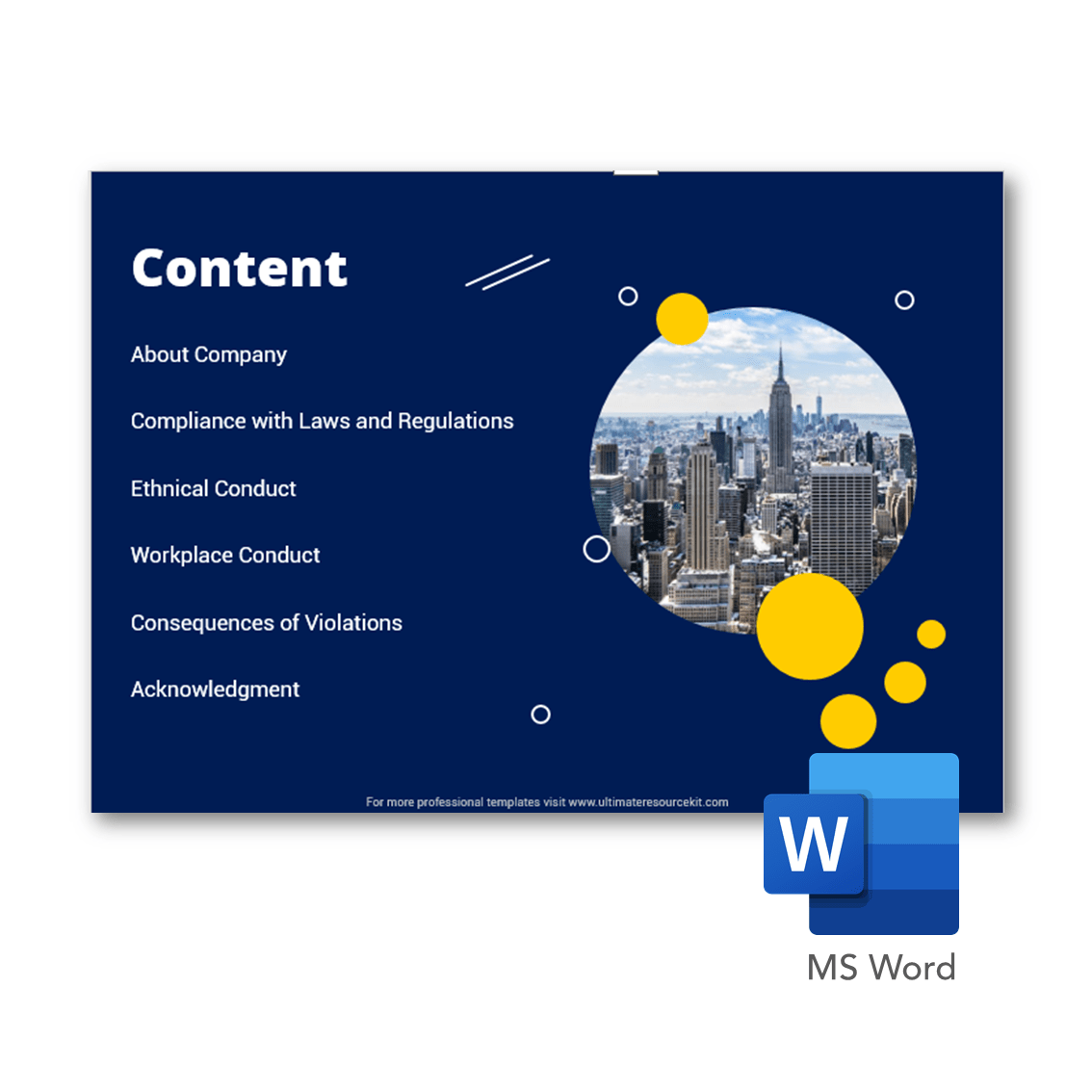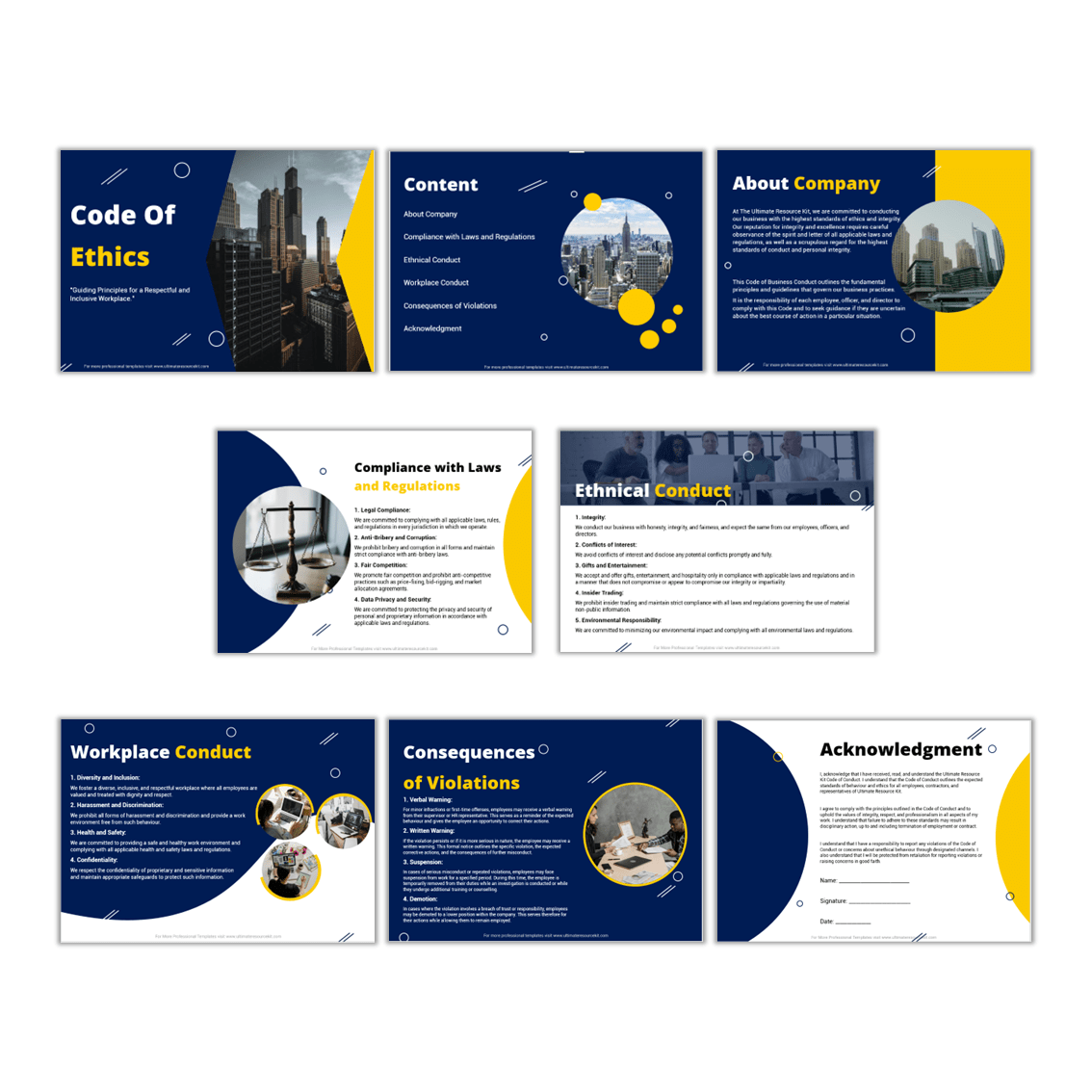











The Code of Ethics Template is a document that outlines the expected behaviour and ethical standards for individuals within a company or organization. It serves as a guide for employees, contractors, and other stakeholders on how to conduct themselves in various situations while representing the company. Here's a breakdown of the sections typically included in a code of conduct template:
1. About the Company: This section provides an overview of the company's mission, values, and principles. It may also include information about the company's history, culture, and key stakeholders.
2. Compliance with Laws and Regulations: This section outlines the company's commitment to obeying all relevant laws, regulations, and industry standards. It may include specific guidelines on areas such as anti-corruption, data privacy, and intellectual property rights.
3. Ethical Conduct: This section outlines the company's expectations regarding ethical behaviour. It may include principles such as honesty, integrity, fairness, respect for others, and avoidance of conflicts of interest.
4. Workplace Conduct: This section provides guidelines for appropriate behaviour in the workplace. It may cover topics such as professionalism, diversity and inclusion, harassment and discrimination policies, confidentiality, and the use of company resources.
5. Consequences of Violations: This section outlines the potential consequences of violating the code of conduct. It may include disciplinary actions, up to and including termination of employment or contract, legal consequences, and reputational damage to the individual and the company.
6. Acknowledgment: This section requires individuals to acknowledge that they have read, understood, and agree to abide by the code of conduct. It may include a signature line or electronic acknowledgement.
Overall, a code of conduct template serves as a tool for promoting a positive and ethical work environment, protecting the company's reputation, and minimizing legal and compliance risks. It should be regularly reviewed and updated to reflect changes in laws, regulations, and company policies.